Boardgames have been around for about as long as humanity has roamed the earth, filling many hearts and minds. Ranging from classics such as chess and checkers to modern ones as snakes & ladders, they have brought many great evenings of joy, adding to a good life. Perhaps one of the most developed subgenre of boardgames is that of war. One may relive the battles of Waterloo, the trenches of World War I, and much more. A classic series in this subgenre is amptly titled Axis and Allies. Originally releasing with Axis and Allies 1942, the series has went on to produce many variations. Today, I take a look at the beginners’ entry for the series, namely Axis and Allies 1941. Let’s dive into it!
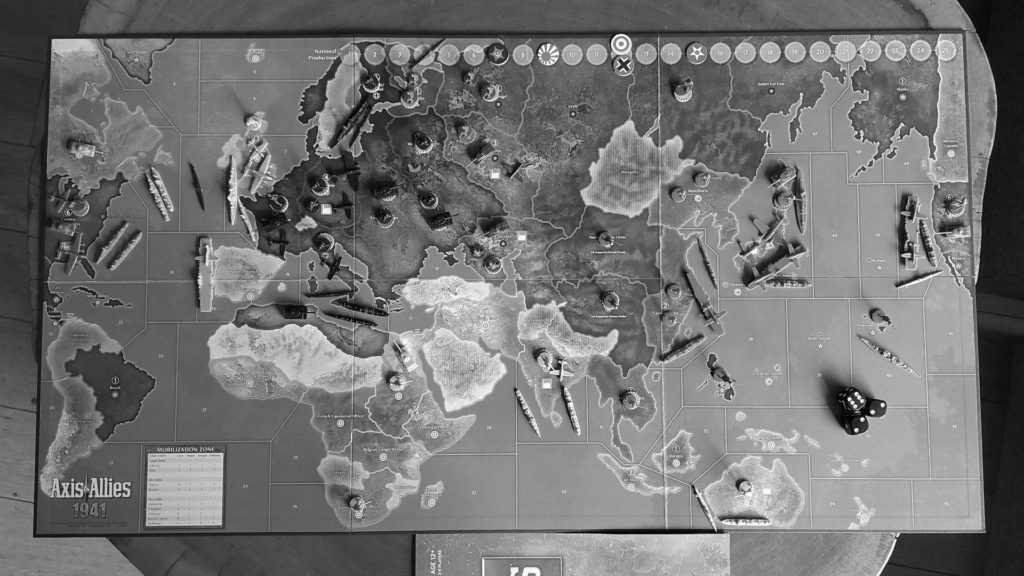
The Axis on the rise
With a title like Axis and Allies 1941, one may be able to deduce what the game is about. Setting itself in World War II, the game revolves around the two sides of the conflict. On the Axis side, we have Germany operating on the European front, while the Japanese keep themselves busy with the Pacific front. Opposing these two are of course the Allies, consisting of the Soviet-Union fighting the Germans. At the same time, the British forces are trying to hold onto the British mainland and their colonies around the world. Lastly, the Americans will have a busy time defending their holdings in the Pacific theatre. As a game for five people, it is up to you and your teammate(s) to fight the other side into submission. Do you think you have what it takes to win the war? Will you be able to rewrite history? It’s all up to you! In 1941 the Axis are on the winning side, but not all hope is lost for the allies!
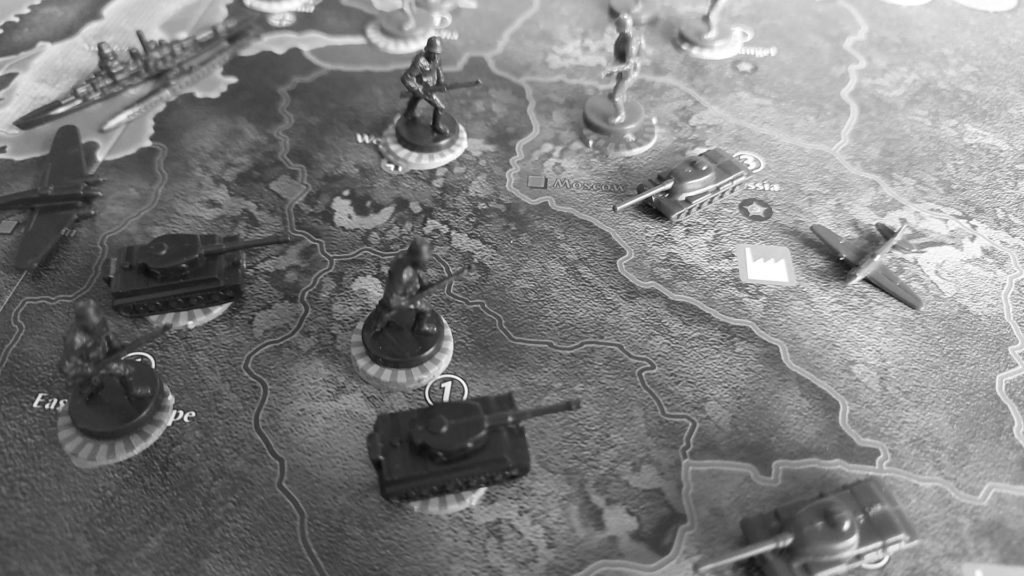
Contents and boxing
One of the nicest things about board games is of course its physical content. With a game like Axis and Allies, it’s always a feast to take a look at the board and the figurines it contains. Contained in the box we have five plastic bags containing the armies of the five powers struggling with each other. Besides that, we have some markers for territorial conquests, some markers to replace figurines, and four dice. Of course, we also have the main piece of the game, namely the board where we will be fighting upon. The board nicely unfolds itself over six parts and shows us a concise map of earth. With some borders we can easily identify the parts of the theatre and where we will have to put our pieces. The board is of a nice quality and for a beginners/marathon version of the game series, it does not disappoint. A minor negative might be that some lands and borders are a bit too concise, making some parts of the world look very odd. After setting up the board with the guidance of the rulebook (unit setup is noted on the back), we may begin playing the game.
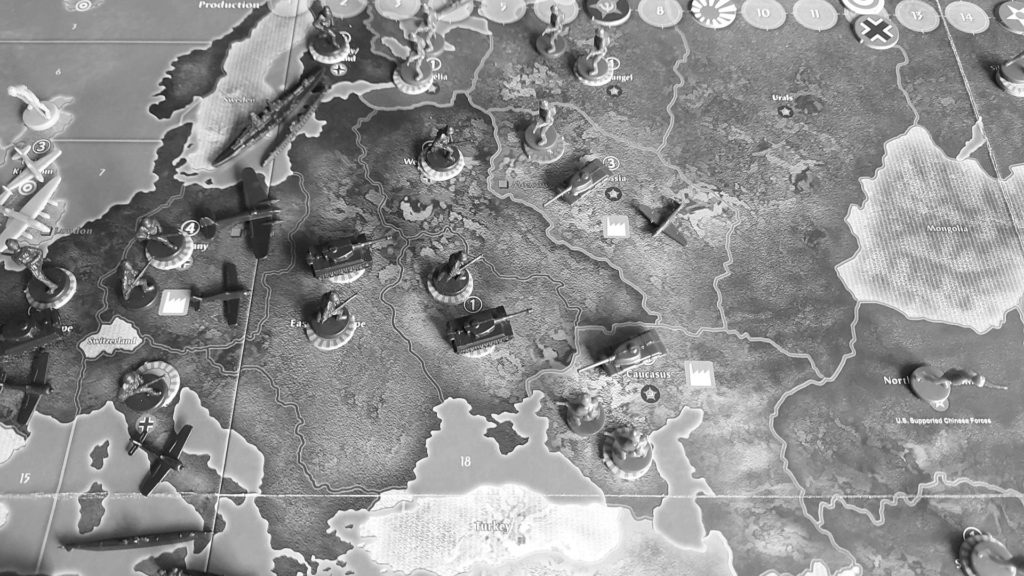
Industry and manpower
So how does it all work? Essentially, there are different units that have different move sets and attack/defence values. These values are determined by the roll of the dice. In short, the lower you throw, the more chance you have of landing a hit. Take the infantry unit for example, it may move 1 tile per turn and attack with a value of 1, whilst defending with a value of 2. This means that to land a succesful attack, one needs to throw a 1 with a dice. For a succesful defense, throw a 2 or lower. If we take the bomber, this unit may move 6 tiles (needing to land in friendly territory), whilst attacking with a value of 4. However, it is only able to defend itself with a 1.
All units have their advantages and disadvantages, so balancee these out with each other. The units are purchased at the beginning of your turn, the amount you may buy depending on your industrial capacity. With an industrial capacity of 7, the Soviet-Union is able to buy 2 soldiers worth of 3 IPC’s, or it might buy a tank worth 6 IPC’s. Losing or conquering new territory helps you grow or lose industrial capacity.
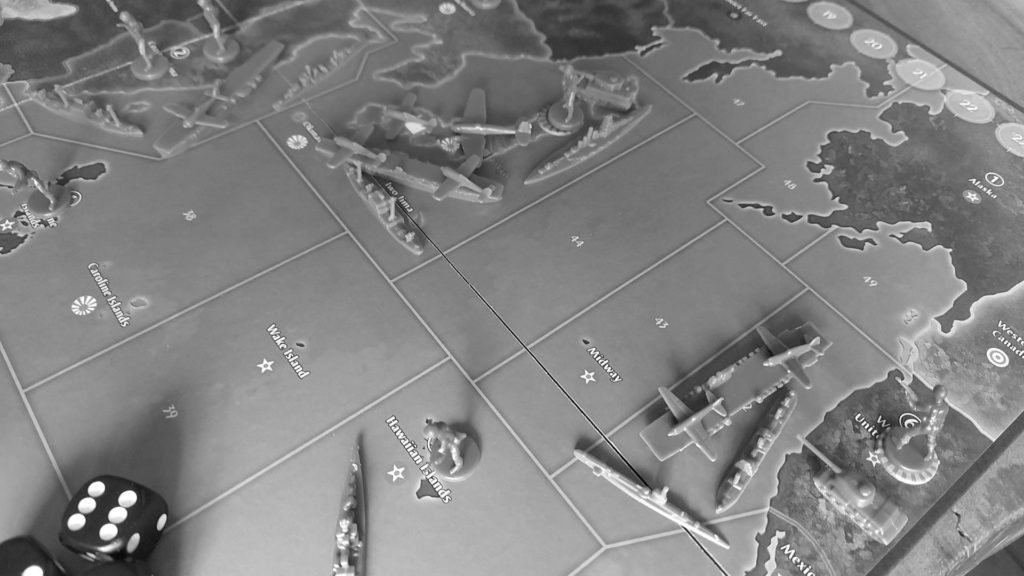
Battling for control
During each player’s turn, one may conduct combat movement with their units or do non-combat movement afterwards. If you want to attack someone’s territory, you move the units that are able to get there with the amount you desire. After all combat movement the battle begins. All attacking and defending units for that territory will fight. Attackers roll first and determine how many hits are landed. Afterwards, the defenders rolls back. Should any units on the defenders’ side remain, the battle may proceed should the attacker want to do so. After determining the outcome of the battle, territory may be won or lost. For sea battles, the same rules apply, although sea territory does not add to industrial capacity. Ruling the seas though, is essential. Should one want to do amphibious landings, control is of the utmost importance.
So how does the game compare to its bigger sisters? As an introduction, this game serves a good purpose, introducing Axis and Allies warfare to newcomers of the genre. It helps you get an idea of aerial warfare, the war on the seas and how to best combine units for the ideal ground attack. Limiting the pieces on the board also keeps things a bit more clear on the strategic ends, avoiding frustrations regarding clarity of the board. The only major downside is that you can win or lose the game fast, depending on the dice roll. Already frustrating in the big ones, the dice rolls can truly determine the outcome of this game, even though you may have the clear advantage in terms of numbers. However, these setbacks are probably most annoying for veterans of the series, whilst newcomers mostly find a game that provides strategic fun on an entry level.
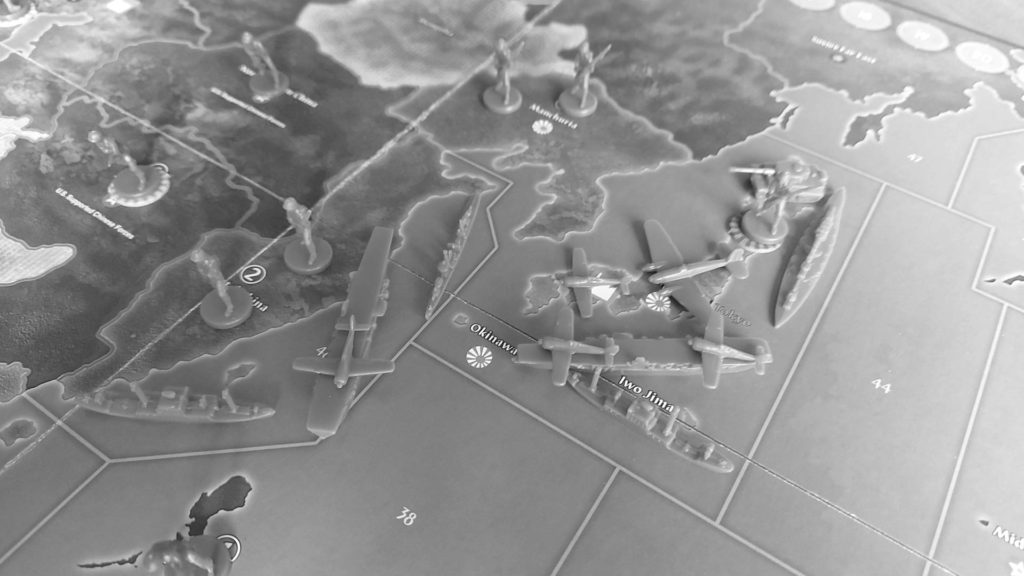
Join up and fight for victory
So if boardgames are your thing and if you enjoy the time together with friends and family, adding some enjoyment to your life, give this game a chance. You are probably able to find a copy in between € 25,- and € 30,- so price should not be too much of a problem. When your copy arrives at your home, sit down with each other, put up some good music and enjoy some friendly warfare with each other. And who knows, you might be able to call yourself the field marshal of your friend group.
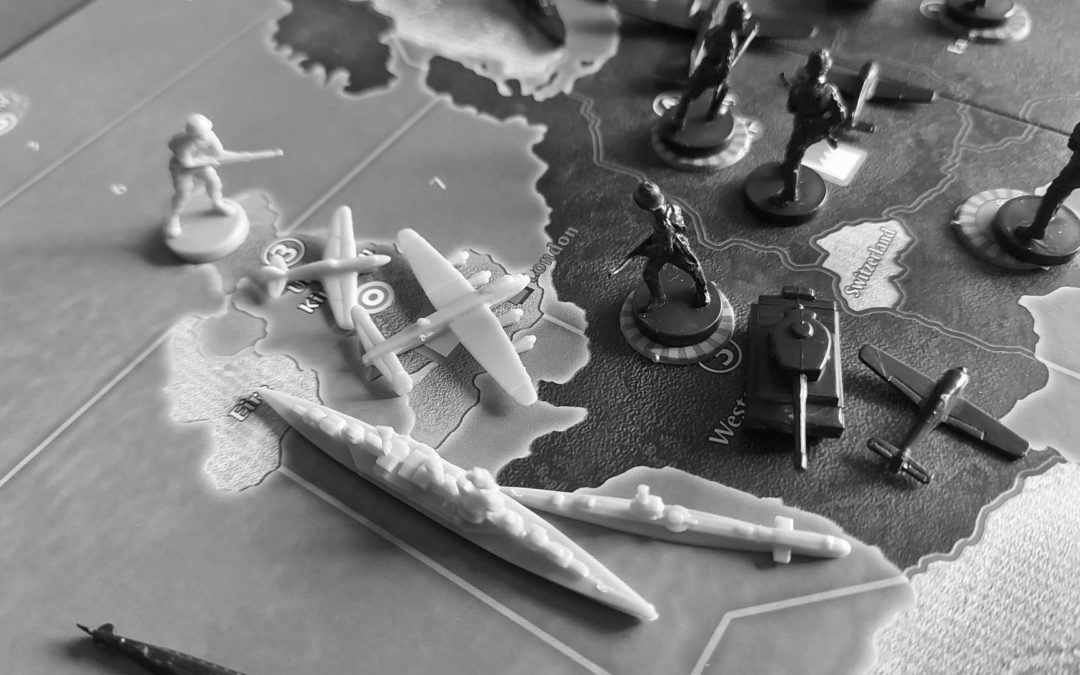
Recent Comments